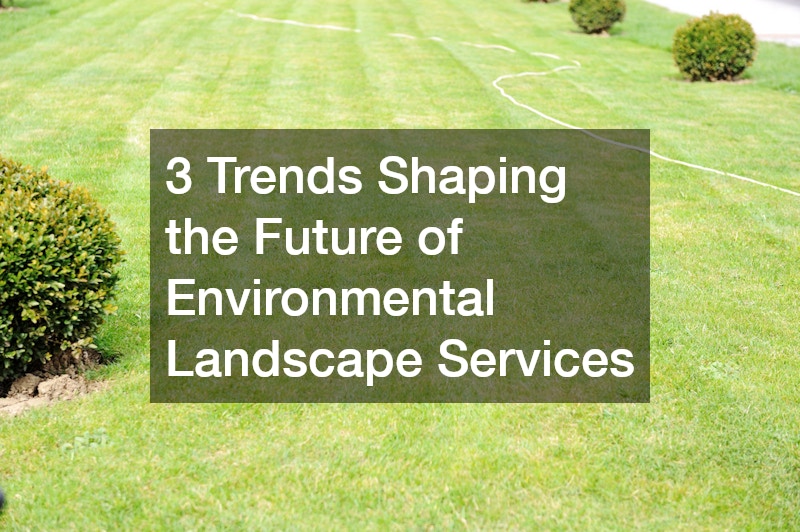Environmental landscape services are evolving fast, driven by rising climate awareness, stricter environmental regulations and demand for more sustainable urban development. Landscapers, developers and homeowners alike are seeking ways to reduce their environmental footprint while still delivering practical and visually appealing outdoor spaces. From greener materials to smarter tools, the sector is adapting with fresh thinking and future-focused practices. These innovations aren’t just about compliance—they’re about efficiency, cost savings and long-term environmental health.
As we look ahead, three key trends are shaping the future of environmental landscape companies in Australia. First, the shift toward sustainable materials is changing how we source and apply landscape supplies. Next, advancements in tree management are making tree removal safer and more environmentally responsible. Finally, smarter machinery use—especially when it comes to excavator hire—is driving better outcomes for both project timelines and land conservation.
By understanding these trends and how they’re reshaping the landscaping industry, property owners and contractors can make more informed decisions. Let’s explore how these developments are setting a new standard for environmental landscape businesses and what it means for the future of Australian outdoor spaces.
1. Use Greener Supplies

Sustainability is quickly becoming a core value in the landscaping industry. As climate concerns grow, more companies are rethinking how they source, use and dispose of materials. Choosing products with lower environmental impact—such as recycled timber, permeable paving and native plants—can significantly reduce carbon emissions, water use and waste. This push toward eco-friendly alternatives is also influencing how landscape designs are developed, with a focus on long-term sustainability, biodiversity and natural resilience. Industry professionals who embrace these shifts are not only doing their part for the planet but also futureproofing their services in a changing market.
When it comes to landscape supplies, smart choices make a noticeable difference. For example, using locally sourced mulch or gravel cuts down on transport emissions while supporting the regional economy. Reclaimed bricks or timber give outdoor spaces character without the environmental cost of new materials. Suppliers are also adapting by offering certified sustainable products and clearer labelling for conscious buyers. Whether it’s a small residential garden or a large commercial site, greener supplies are becoming the standard across environmental landscape companies, and their growing availability means it’s easier than ever to choose materials that do less harm and last longer.
2. Improve Tree Removal

Trees play a vital role in environmental health, but not every tree is suitable for every location. Overgrown, diseased or poorly placed trees can pose safety hazards or interfere with urban development. That’s why modern tree removal practices are increasingly focused on minimising ecological disruption while enhancing public safety. Industry professionals are adopting more selective, data-driven approaches to identify trees that need removal and preserve those that benefit the ecosystem. This trend aligns with broader goals in environmental landscape services to protect green cover and promote urban biodiversity.
Technologies like aerial imaging, root zone analysis and non-invasive diagnostics are making tree removal more precise and less damaging to surrounding vegetation. Contractors now use advanced rigging techniques, low-impact machinery and site-specific planning to avoid soil compaction and habitat destruction. In some areas, removed trees are chipped for mulch or repurposed for furniture, ensuring no part of the tree goes to waste. These practices not only reduce the environmental toll but also improve the public perception of tree management. As expectations grow for greener urban spaces, responsible tree removal is becoming a key feature of professional environmental landscape businesses.
3. Hire Smarter Gear

Efficient land management relies heavily on access to the right equipment. As projects grow in complexity and scope, the demand for smarter, more versatile machinery is rising across the landscaping sector. Equipment like compact excavators, tracked loaders and articulated dumpers are being engineered for improved manoeuvrability, fuel efficiency and safety. Choosing the right machinery for the job helps reduce time, labour costs and environmental impact. That’s why smart excavator hire is emerging as an essential part of modern landscaping workflows.
More contractors are turning to short-term or project-specific equipment hire to meet changing demands without overcapitalising. This flexibility allows them to choose low-emission models, reduce downtime and access the latest tech features like GPS grading systems or tilt rotators. For example, using a mini excavator with a smaller footprint on sensitive sites can help maintain soil structure and protect plant life. Additionally, many hire companies now offer environmental advice and machine pairing services, ensuring landscapers choose equipment that aligns with the goals of sustainable land care. Through this approach, excavator hire supports the broader mission of environmental landscape companies, making outdoor projects both more productive and environmentally responsible.
Environmental landscape services are undergoing meaningful change, shaped by a shared commitment to sustainability, precision and smart resource use. By choosing greener landscape supplies, improving how tree removal is managed and embracing smarter excavator hire options, contractors and property owners can reduce impact and elevate project outcomes. These trends not only reflect a shift in industry standards but also signal a growing public expectation for environmentally conscious practices. As the sector continues to evolve, those who adapt to these changes will be better positioned to lead the way in building greener, more resilient outdoor spaces for Australia’s future.

